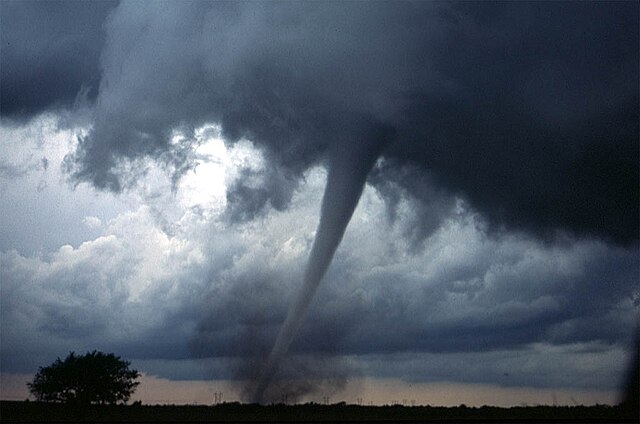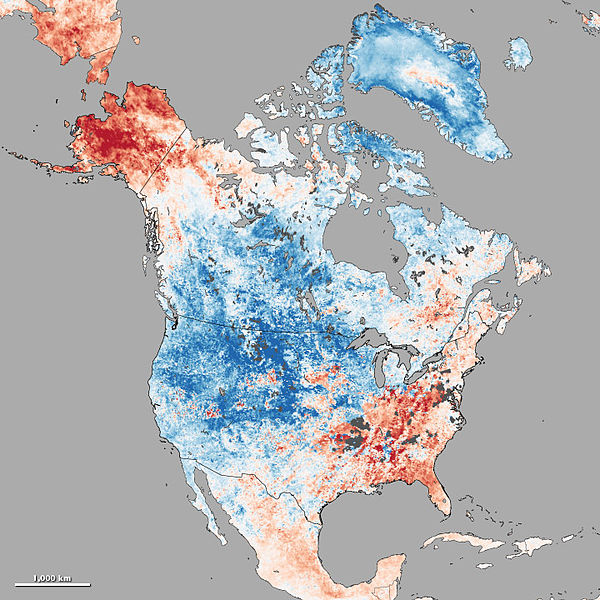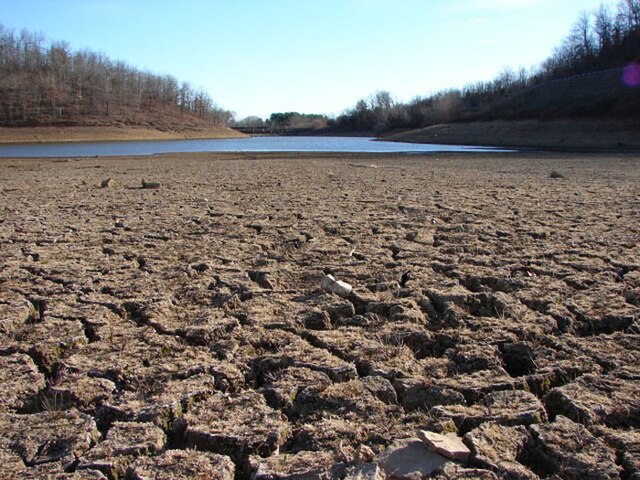Extreme weather includes unexpected, unusual, severe, or unseasonal weather; weather at the extremes of the historical distribution—the range that has been seen in the past. Extreme events are based on a location's recorded weather history. They are defined as lying in the most unusual ten percent. The main types of extreme weather include heat waves, cold waves and heavy precipitation or storm events, such as tropical cyclones. The effects of extreme weather events are economic costs, loss of human lives, droughts, floods, landslides. Severe weather is a particular type of extreme weather which poses risks to life and property.
A tornado is an example for an extreme weather event. This tornado struck Anadarko, Oklahoma during a tornado outbreak in 1999.
2003 European heat wave
Cold wave in continental North America from Dec. 3–10, 2013. Red color means above mean temperature; blue represents below normal temperature.
A dry lakebed in California, which is in 2022 experiencing its most serious drought in 1,200 years, worsened by climate change.
Severe weather is any dangerous meteorological phenomenon with the potential to cause damage, serious social disruption, or loss of human life. Types of severe weather phenomena vary, depending on the latitude, altitude, topography, and atmospheric conditions. High winds, hail, excessive precipitation, and wildfires are forms and effects of severe weather, as are thunderstorms, downbursts, tornadoes, waterspouts, tropical cyclones, and extratropical cyclones. Regional and seasonal severe weather phenomena include blizzards (snowstorms), ice storms, and duststorms.
Various forms of severe weather
Panorama of a strong shelf cloud, which can precede the onset of high winds
The F5 tornado that struck Elie, Manitoba, Canada, in 2007
Formation of numerous waterspouts in the Great Lakes region








